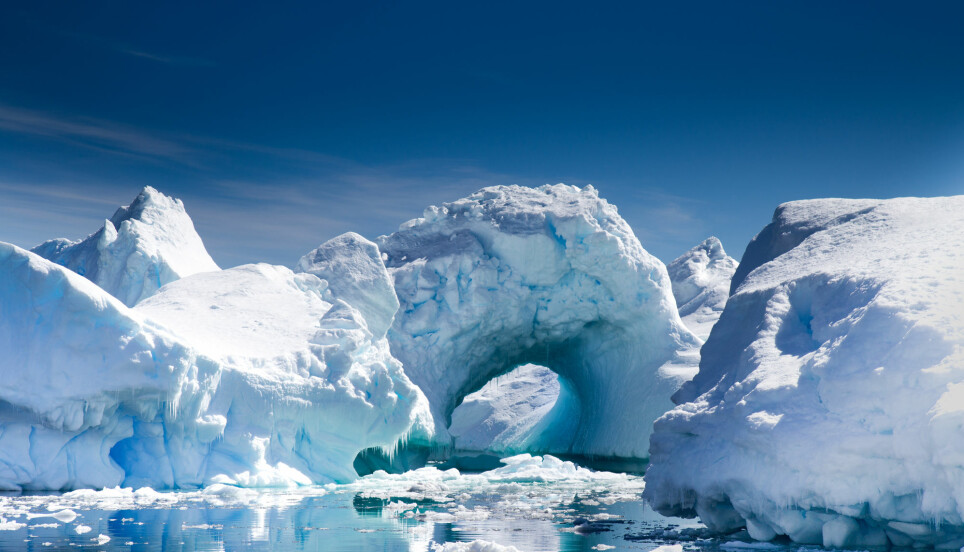
The "missing link" that triggered the ice ages
Melting icebergs from Antarctica are the key, according to a new study.
Icebergs broke loose from Antarctica and travelled north.
As it got colder, they journeyed farther and farther north and carried large quantities of fresh water out to sea. This triggered global changes in ocean circulation, a new study published in the journal Nature reports.
Researchers have suspected that the Southern Ocean and Antarctica were crucial to global climate, but this has not been documented in the geological data until now, according to Margit Hildegard Simon, a researcher at Norce, the Norwegian Research Centre.
Simon partcipated in an expedition that collected samples from the seabed, off South Africa.
A mystery
During the last two to three million years, the Earth has cycled in and out of ice ages and interglacial periods.
Small changes in the Earth's orbit around the Sun are important in setting the pace of these cycles.
They are called Milanković cycles and they determine how much solar radiation that will reach Earth.
But it has been a mystery as to how fairly small changes in solar radiation can lead to such dramatic shifts, like the ice ages, Simon said.
“There must be other processes that also play a role,” she said.
Lots of fresh water carried by icebergs
Based on samples from the seabed and climate modelling, researchers believe that icebergs in Antarctica started a chain reaction.
“When the Earth's orbit was just right, icebergs broke off the coast of Antarctica and drifted away from the continent,” says Simon.
This happened because of internal ice dynamics in Antarctica and external mechanisms that force the ice to break up, she said.
The water surface temperature was cold at the start of a new ice age, and this made it possible for the icebergs to travel farther and farther before melting. But as the icebergs drifted into warmer waters, they began to melt and disappear.
In this way, fresh water was transported from the Southern Ocean to the Atlantic Ocean.
“As a result, the Southern Ocean became saltier and the North Atlantic fresher, and global ocean circulation patterns changed dramatically,” Simon said.
“This caused the ocean to absorb increased amounts of carbon dioxide from the atmosphere, which reduced the greenhouse effect, and pushed the Earth into ice age conditions,” she said.
Changes in ocean circulation can also affect how the ocean distributes heat.
Climate models confirm that large amounts of fresh water can have been transported by the icebergs.
Happened at the beginning of each ice age
On the expedition, the scientists collected sediment cores from the seabed.
In these samples, they found layers with fragments of rocks from Antarctica. The stones have been transported out to sea by floating icebergs.
The data show how this transport took place over a period of 1.6 million years.
The scientist found that the stone deposits seemed to lead to changes in deep ocean circulation. This link was based on the chemistry of small deep-sea fossils called foraminifera.
Aidan Starr, a scientist at Cardiff University, participated in the study. He says in a press release that they were surprised to see that the relationship was present "at the beginning of all the ice ages in the last 1.6 million years".
Ian Hall led the International Ocean Discovery Program 361 research cruise, and also participated in the study.
“Our results provide the missing link into how Antarctica and the Southern Ocean responded to the natural rhythms of the climate system associated with our orbit around the sun,” he says in the press release.

Still missing the full picture
Simon agrees that the transport of fresh water by icebergs seems to have been important for the beginning of the ice ages.
“It’s an important discovery that icebergs have been identified as the source of large amounts of fresh water that was transported a good distance from Antarctica. This may explain global changes in ocean circulation at that time. It is a strength that evidence for the deposits was found repeatedly over the last 1.6 million years,” she said.
Still, scientists have not found out all the details of what caused the ice ages.
“There are many things we still haven’t fully investigated or discovered. For example, after large amounts of greenhouse gases are extracted from the atmosphere, we still don’t know how they got trapped in the Southern Ocean for extended periods and at some point released again,” Simon said.
Translated by: Nancy Bazilchuk.
Reference:
Aidan Starr, et al .:“Antarctic icebergs reorganize ocean circulation during Pleistocene glacials”, Nature, 13 January 2021. Abstract.


































